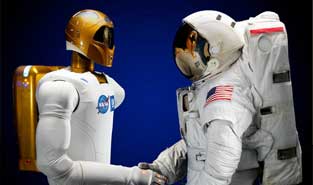
To do this, I would like to work with two conceptual frameworks that have appeared previously in my writings. First, there is the theme of configurations of phenomena and stimuli. At this point, I would like to review two models I’ve used in the past. Grounded phenomena are phenomena that tend to blend with other phenomena: water, clay, earth, lava, grasslands. Figures tend to have defined boundaries and tend not to blend with other phenomena. Any distinct object, plant, animal or person fits this category. Vacuum is the spaces between different figure and ground phenomena.
Continual stimuli are stimuli with indeterminate borders and with blurry beginnings and endings: a wave, a legato sound from an organ, the taste of chocolate, the smell of perfume on a woman. Discrete stimuli are stimuli with determinate borders and with crisp beginnings and endings: a line, a dot, a staccato sound from a drum, a puff of air. Continuous stimuli are stimuli with no beginning and no end. The total darkness in an unlit basement and the soft hum in total silence are examples of continuous stimuli.
Animals are figures that are still highly connected to their grounded environment. Their minds operate on the basis of a relatively few instinctual determinate discrete stimuli and a lot of intermingled indeterminate continual stimuli that produce gross responses. Domesticated animals operate on the basis of more discrete stimuli than their wild relatives as a result of human training.
Now some people at this point might wonder where I have the evidence for these statements. Basically I am postulating the existence of a kind of stimuli that are not subject to the precise study, measuement, classification and control that determinate crisp stimuli are. Scientific studies have difficulty working with indeterminate stimuli. Science tends to look at anything blurry as somehow not real and substantive. Blurry is perceived only as a deficient focus on the world. When it can, science will convert blurry stimuli and ground phenomena into crisp stimuli and figures, and in doing so, it distorts them. But as long as we experience blurry stimuli, sometimes in the process of trying to make a precise focus, then they have real and substantive value.
Returning to animal minds, my map is based on soft empiricism and inference. Animals do have structured behavior, but not of the complexity of humans. Humans, with their cerebral cortex, balance the continual stimuli they experience as animals with many more discrete stimuli. Humans use the discrete stimuli they experience in the world and in their minds to build an environment filled with a lot of figures and defined surfaces. As modern human history unfolded, humans developed the increasingly complex figures of industrial machines, computers and robots as well as the hard laminated surfaces of modern technological living environments. They became increasingly surrounded by sources of discrete stimuli rather than the natural grounded sources of continual stimuli necessary to activate and keep alive their more primitive fundamental animal natures. For humans, unlike animals, are not so immersed in the grounded phenomena of nature and the continual stimuli it produces. They rise above nature and become more distinct from it than animals. And yet unlike robots, they do have a grounded base, they are still partly activated by blurry continual stimuli. Robots are activated by mechanical discrete stimuli. Granted that there are attempts today to combine robot parts with biological parts, it is still important to note that the robot parts are still operated by complex mechanical signals that at their base are still discrete signals.
The other conceptual framework within which I want to work for distinguishing humans from robots is the framework of imprint theory and purposes for existence. Just as the cerebral cortex of humans allows them to focus on and create more figures and discrete stimuli, so it allows humans to be conscious of their own mortality and to prepare for death by preserving a lot of the imprints they make. Animals can leave imprints in very basic ways like having offspring and marking their territory. But this pales beside the complex imprints made and preserved by humans. Humans create complex cultures, societies and civilizations. They create art, artifacts, monuments, ideas and the means for preserving these ideas in tangible form. Humans create preserved imprints and they create vessels for containing and protecting these preserved imprints like museums, galleries, libraries and archives. But the important thing to remember is that all these preserved imprints start from vulnerable human imprints that are made by the human mind sometimes initially to feel richly alive and sometimes directly to prepare for death. There is an organic beginning to these imprints and a human mental beginning to these imprints.
And part of the content of these imprints is the continual stimuli emanating from the structural coherence in the mind that allows the imprints to have meaning. The very notion of an imprint as opposed to simply a mark implies a mind that coheres together because of internal continual stimuli. Because robots are activated by discrete stimuli, the foundation of engineering, they really leave marks rather than imprints. In previous essays, I have talked about robots leaving imprints, but I was only talking within such parameters to emphasize that a particular mark was made by robots rather than humans. But, in truth, robots make marks on their external world, while humans make imprints. As complex as robots get, their mechanical robot parts will never have the human base of continual stimuli to give them consciousness and an unconscious, and the blurry dreams that lead to concrete plans that lead to the development of complex imprints in society, culture and civilization.


Artículos Relacionados: